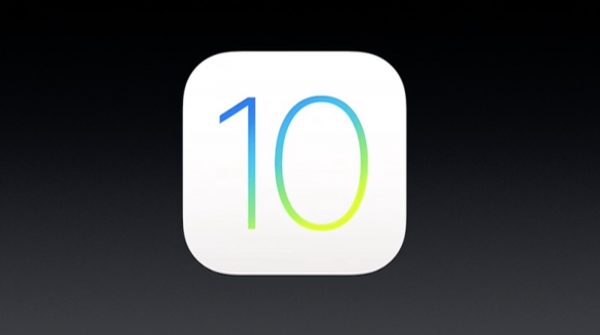
by Drew Howerton, section editor.
Every iOS update has added something to Apple’s lineup of devices. Multitasking was added in iOS 3, and Siri was added in iOS 5 with the iPhone 4s. iOS 7 completely overhauled the graphic interface, taking it in a minimalistic and clean direction. But the iOS’s newest version, iOS 10, seems to not just redefine the operating system, but the iPhone itself.
iOS 10 is the biggest update to the platform since iOS 7 in 2013. Like the latter, iOS 10 is a massive update that improves upon core functions of the iPhone, such as Siri, Messages, Maps, Music, Photos and overall graphical interface.
Out of all of iOS 10’s newest features, Siri has gotten the most love. The personal assistant has been opened up to developers, meaning that it can interact and perform tasks within certain third party apps. For instance, Siri can summon an Uber or Lyft, send messages through apps like Linkedin or WhatsApp, or send and receive money. In theory, allowing Siri to have access to third party applications makes it a better personal assistant, because it can do more complex tasks through But as it stands right now, Siri can only interact with a limited amount of apps, because Apple controls which apps and which developers get access to Siri’s code. So far, Siri is only compatible with features like audio/video calling, sending and receiving payments, searching photos, and booking rides. While that’s still a large amount that Siri couldn’t do before, it’s still pretty limited in terms of functionality. In my tests, I tried to use Siri to play music from Spotify or Pandora, it can only open the app, but nothing else (in fact, the only streaming service that Siri can interact with is Apple Music.). Siri has become more versatile, but it still needs some fine tuning before it can be a truly useful assistant.
Messages received a large overhaul in iOS 10, adding a polished interface and new ways to be expressive through messages. Messages now have effects, such as shaking for emphasis, or confetti raining down the screen when it is sent. My personal favorite feature is the addition of handwritten messages, which allows me to draw animated messages with my finger, or use finger gestures to send beautifully animated images, like double tapping the screen to produce a heartbeat. Messaging has also been opened to third party apps, allowing for users to send information from apps like Fandango or The Weather Channel, and like Siri, can also be used to send and receive payments. The keyboard has also been updated, with improvements to predictive typing and dictation, using deep learning software to learn user habits and more accurately predict words that I might use. Predictive typing also has the ability to replace words with emojis that correspond to them, like replacing the word fire with the fire emoji. I think that the update to messaging is one of iOS 10’s best features, because it lets me retain the ability to be expressive with how I write, which is important as more and more interaction happens through text.
Photos haven’t changed a lot in iOS 10, but now organizes photos in a tab called Memories, which aggregates photos based on date, time and location to create a scrapbook-like way of viewing photos. Photo editing has also been enhanced, and photos can now be drawn on, meaning I don’t have to use Snapchat to draw on all my selfies. Photos can also recognize faces, and organizes them in an album appropriately called Faces. While there’s not a ton of new stuff, it’s important to note Apple’s push into smart software by implementing learning algorithms in order to better organize data, and I think it’s neat that I can relive some of my greatest hits.
Besides updates to big applications, iOS 10 adds a massive amount of small tweaks and graphical polishes. A new app has been installed called Home, which allows for a user to connect devices like smart thermostats to their phone and control those devices remotely. But aside from adding an application, users can now delete apps that came pre-installed, such as GarageBand or Health. Music has received tweaking, and now easier to queue music, and Siri can now stream from Apple Music through voice commands. Widgets and notifications are organized by date and time, rather than application, but can still be configured to display by a preferred category. Voicemails are now automatically transcribed and can be read in the lockscreen, and users are alerted to incoming spam calls. The home button is now used to unlock a phone, as sliding left displays widgets such as News, Weather, Reminders and Messages, and the lock screen has received a graphical update.
On the subject of graphical updates, iOS 10 looks absolutely stunning. Lock screen notifications are bright and rounded, and don’t blur out lock screen wallpapers when they pop up. Every single application has been polished, creating a consistent feel that some parts of iOS 9 lacked. The entire emoji library has been overhauled, and on top of redesigning almost every emoji, more have been added. iOS 10 goes for a minimalistic approach, and while it’s simplistic interface sacrifices a bit of functionality, such as the shuffle button in Music being hidden in a sub menu, the operating system’s clean look finally matches the look of the hardware it runs on.
I still have some problems with iOS 10. Sliding left to unlock the phone is a feature that has existed from the iPhone’s conception, but has been abandoned in favor of widgets, and creates a bit confusion from the moment system is turned on. I applaud Apple for trying something different, but it feels like a move in the wrong direction. Once a company creates a consistent feature, like sliding to unlock, removing that feature without warning can be user hostile. I’m bothered Siri’s limited functionality; yes, it can do more than it could when it was first introduced, but Siri is far from being my go to gal. As an avid user of Siri, I think that it should be able to work with a diverse amount of applications, not just what Apple deems acceptable. But most of all, I think that pushing out a massive software update like this alienates users who are restricted from having similar functionality because they don’t have the latest device. Even on my iPhone 6S, I can’t enjoy features like 3D touch or Live Photos, because I don’t have the latest and greatest hardware. This strategy works out great for Apple, because it ensures that people have to buy their phones, but it frustrates users who can’t upgrade, or don’t feel the need to.
Despite some of my minor frustrations, I think that iOS 10 has allowed me to get the most out my phone, my constant companion. My phone is not just a device that I call people with; it’s my personal assistant, it’s my dictionary and encyclopedia, it’s my stereo system and my swiss army knife. I can now perform more tasks with less action with Siri, and I can express myself through messages, all through a device that looks as beautiful as it feels to use it.
iOS 10 is now available for download on iPhone 5 or later, iPad mini 2 or later, and any 6th generation iPod touch. Make sure your device is compatible before downloading.

